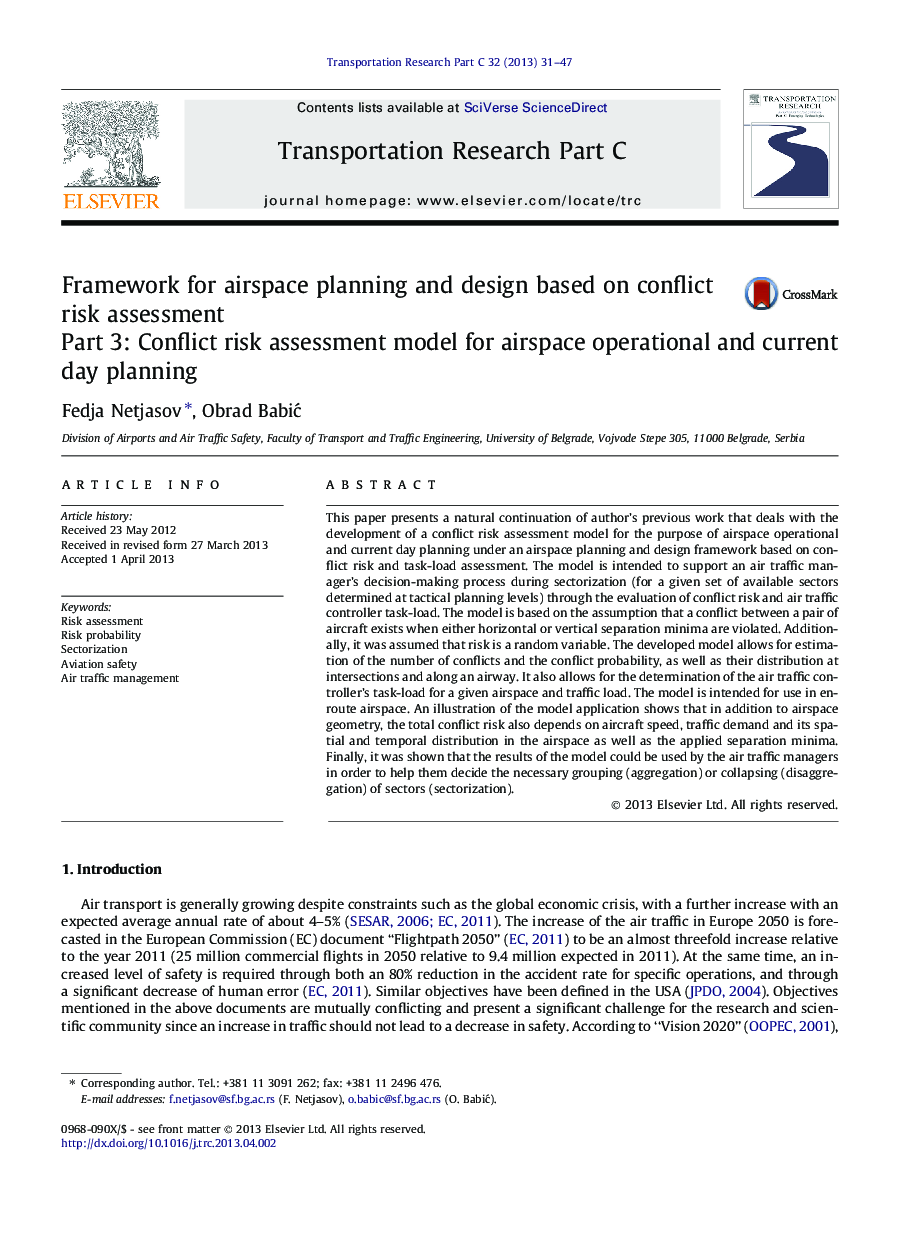| Article ID | Journal | Published Year | Pages | File Type |
|---|---|---|---|---|
| 524947 | Transportation Research Part C: Emerging Technologies | 2013 | 17 Pages |
•A conflict risk assessment model was developed for airspace operational and current day planning.•The risk is defined as the product of conflict probability and conflict frequency.•The risk is assumed to be a random variable.•It is designed to be used as a decision support tool for air traffic managers.
This paper presents a natural continuation of author’s previous work that deals with the development of a conflict risk assessment model for the purpose of airspace operational and current day planning under an airspace planning and design framework based on conflict risk and task-load assessment. The model is intended to support an air traffic manager’s decision-making process during sectorization (for a given set of available sectors determined at tactical planning levels) through the evaluation of conflict risk and air traffic controller task-load. The model is based on the assumption that a conflict between a pair of aircraft exists when either horizontal or vertical separation minima are violated. Additionally, it was assumed that risk is a random variable. The developed model allows for estimation of the number of conflicts and the conflict probability, as well as their distribution at intersections and along an airway. It also allows for the determination of the air traffic controller’s task-load for a given airspace and traffic load. The model is intended for use in en-route airspace. An illustration of the model application shows that in addition to airspace geometry, the total conflict risk also depends on aircraft speed, traffic demand and its spatial and temporal distribution in the airspace as well as the applied separation minima. Finally, it was shown that the results of the model could be used by the air traffic managers in order to help them decide the necessary grouping (aggregation) or collapsing (disaggregation) of sectors (sectorization).
